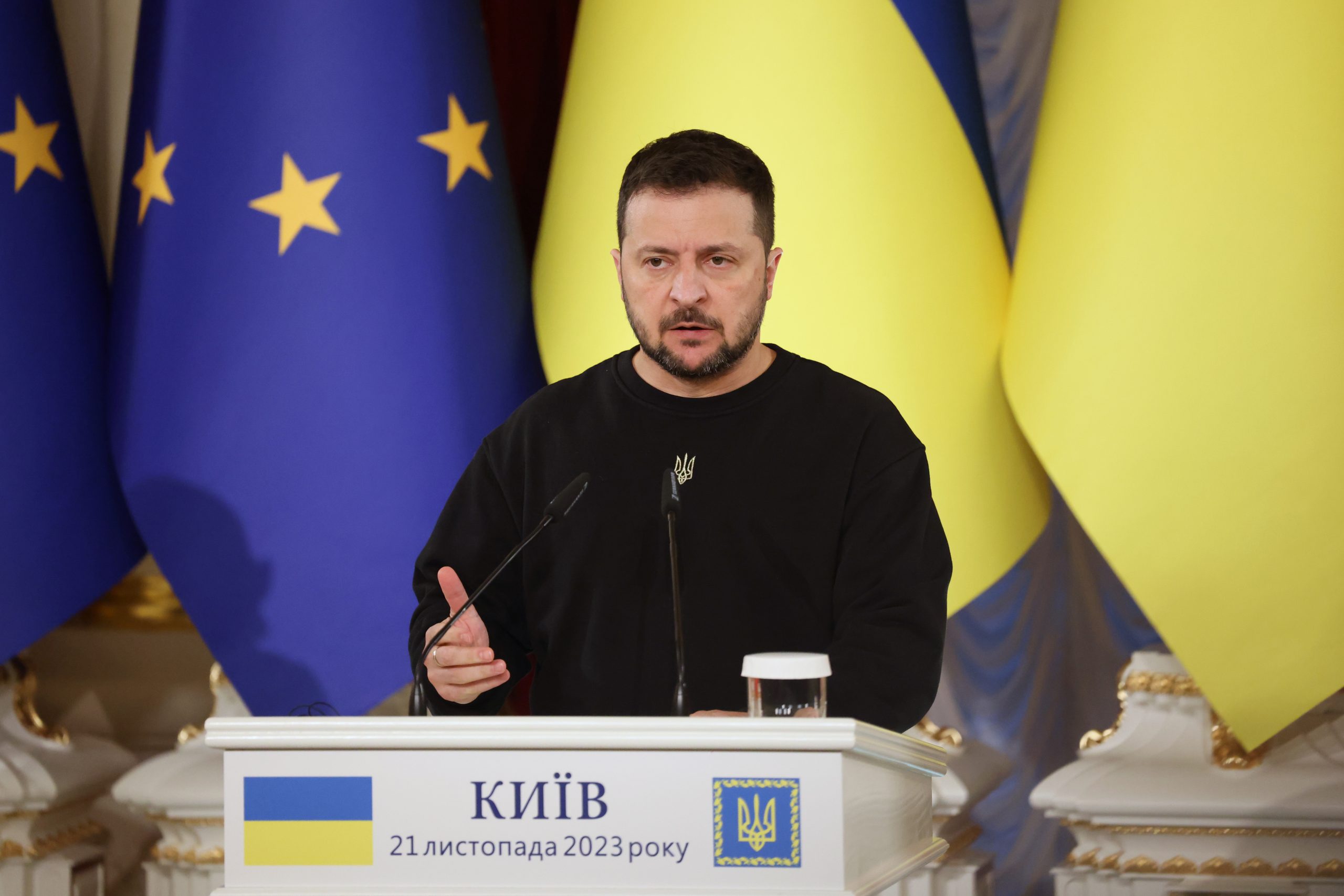Introduction
After more than two years of war, Ukraine is experiencing a shortage of ammunition and military equipment, since the United States and European partner’s struggle to resupply the country’s military (Bertrand & Bo Lillis, 2024). The lack of ammunition and personnel is having direct consequences on Ukraine’s position on the battlefield, as it deteriorates, Russia achieves new tactical successes near the village of Berdychi and Semenivka, both north of Avdiivka (Al Jazeera, 2024) a city captured by Russia in March 2024. The threat of a Ukrainian significant loss has prompted the European Union, the EU Member States, and the United States to consider sending military and financial aid packages in 2024 to respond to Ukraine’s shortages.
The EU disbursed €6 billion in 2024 to Ukraine to support the country’s macro-financial stability through the Ukraine Facility from the expected €50 billion to be allocated between 2024-2027 (European Commission, 2024). Coupled with the approval on 22 April 2024 of the Ukraine Security Supplemental Appropriations Act providing $60.84 billion for military assistance to Ukraine by the US Congress, it seeks to decrease the shortages and close the expenditure gap between Ukraine and Russia. As Ukraine approaches a critical juncture in its military campaign, the strategic deployment of this assistance from Ukraine’s allies will be critical, especially, to shift the current dynamics on the battlefield.
US Military Aid to Ukraine
President Joe Biden signed the Ukraine Security Supplemental Appropriations Act on 24 April 2024, which will provide crucial military assistance to Ukraine, after months of the bill’s blockade in the US Congress. Of the $60.84 billion, $23.2 billion will be used for the replenishment of US weapons, stocks, and facilities (House Appropriations Committee Republicans, 2024). The other $37.64 billion will be divided as follows: $11.3 billion for current US military operations in the region, $13.8 billion for procurement of advanced weapons systems, defence articles and defence services, and, finally, $26 million to continue oversight and accountability of aid and equipment provided to Ukraine (House Appropriations Committee Republicans, 2024). The operationalization of this bill will be observed in the short term. President Biden approved sending to Ukraine $1 billion in military assistance, the first instalment of the $61 billion allocated (Madhani & Min Kin, 2024). The package includes air defence capabilities, artillery rounds, armoured vehicles, and other weapons.
The Pentagon could get weapons to Ukraine within a day once Congress passed the aid bill due to its network of storage sites in the US and Europe that already hold the ammunition and air defence components Ukraine needs (Copp & Baldor, 2024). The influx of military aid to Ukraine could significantly alter its strategic position and operational capabilities in the short term.
The immediate effect of the aid is expected to allow Ukraine to enable a more sustained military engagement. However, it remains unclear if this bill will cover the shortages Ukraine is experiencing in terms of ammunition. The Economist (2024) mentions that this bill should equip Ukraine with enough ammunition to last for a year, while the Institute for the Study of War warned that Ukraine would likely continue facing ongoing shortages of artillery ammunition and air defence interceptors (Carey & Lister, 2024).
EU Financial and Military Contributions
The European Union, recognizing the prolonged nature of Ukraine’s needs, has proposed a new financial instrument—the Ukraine Facility—with an envelope of up to €50 billion. This initiative aims to provide predictable and flexible support from 2024 to 2027, focusing on recovery, reconstruction, and modernization along Ukraine’s EU integration path (European Commission A, 2024). As of early 2024, €6 billion has already been disbursed as emergency bridge financing under this facility (European Commission A, 2024). The financial contributions will help ensure that Ukraine can continue paying salaries, and pensions, and providing basic public services (European Commission B, 2024).
Both aid packages provide complementary support for Ukraine, each focusing on diverse aspects of Ukraine’s needs. On the one side, the US has concentrated on bolstering Ukraine’s military capabilities through military aid designated for advanced weapons systems and immediate operational support, which will be crucial for enhancing Ukraine’s defence capabilities against Russian advances, especially in the east of Ukraine. Concurrently, the EU’s financial instrument, the Ukraine Facility, aims to stabilize civil society by ensuring continuous funding for salaries, pensions, and public services, supporting the rule of law and governance. Together, these initiatives provide a holistic approach to both immediate defence needs and longer-term stability.
Closing the Military Expenditure Gap
The Stockholm International Peace Research Institute (SIPRI) highlighted a significant shift in the military spending dynamics between Ukraine and Russia. In 2023, Ukraine’s defence spending reached $64.8 billion, making it the ninth largest globally, and when including international military aid, Ukraine’s spending was 91% of Russia’s $109 billion expenditure in the same year (SIPRI, 2024). SIPRI noted that this aid effectively narrowed the spending gap to just $10 billion, with Ukraine receiving at least $35 billion in military aid last year alone (SIPRI, 2024). The narrowing of the military expenditure gap marks is supposed to mark a significant shift in the conflict’s dynamics. By substantially narrowing this gap, Ukraine’s allies have enhanced through monetary contributions Ukraine’s defensive capabilities.
Nevertheless, while the $35 billion military aid represents a significant contribution, it has been observed with the six-month blockade of the Ukraine Supplemental Appropriations Bill in the US Congress how Ukraine is highly reliant on military aid to effectively perform on the battlefield. As SIPRI notes, despite the large amounts of military aid promised by Ukraine’s partners last year, the country’s armed forces “remained outgunned and outmanned, crucially lacking ammunition and air defence” systems (SIPRI, 2024). Ergo, while the gap in expenditure is closing, the practical impact on the ground will depend on the logistics of operationalizing the aid into weaponry systems and ammunition arriving at the front lines, and its efficient allocation and utilisation.
Conclusion
In conclusion, the augmented financial and military aid from the US and EU represents continued support to Ukraine, attempting to provide solutions to its ammunition crisis. The military aid packages from Western allies, as outlined by SIPRI, are closing the expenditure gap with Russia and enhancing Ukraine’s defensive capabilities in critical areas, including air defence. Despite this, challenges like ammunition shortages and manpower deficits persist, emphasizing that while the aid significantly strengthens Ukraine’s military resources, it is not a definitive solution to all strategic challenges. Moving forward, the effectiveness of this support will depend on its continuous adaptation to the evolving battlefield realities, and likely the rethinking of the military and financial aid to Ukraine beyond its short-term effects, and a re-shift focusing on long-term stability and defense readiness.
About the Author:
Marina Tovar is a researcher on Military & Security Affairs at Finabel.


